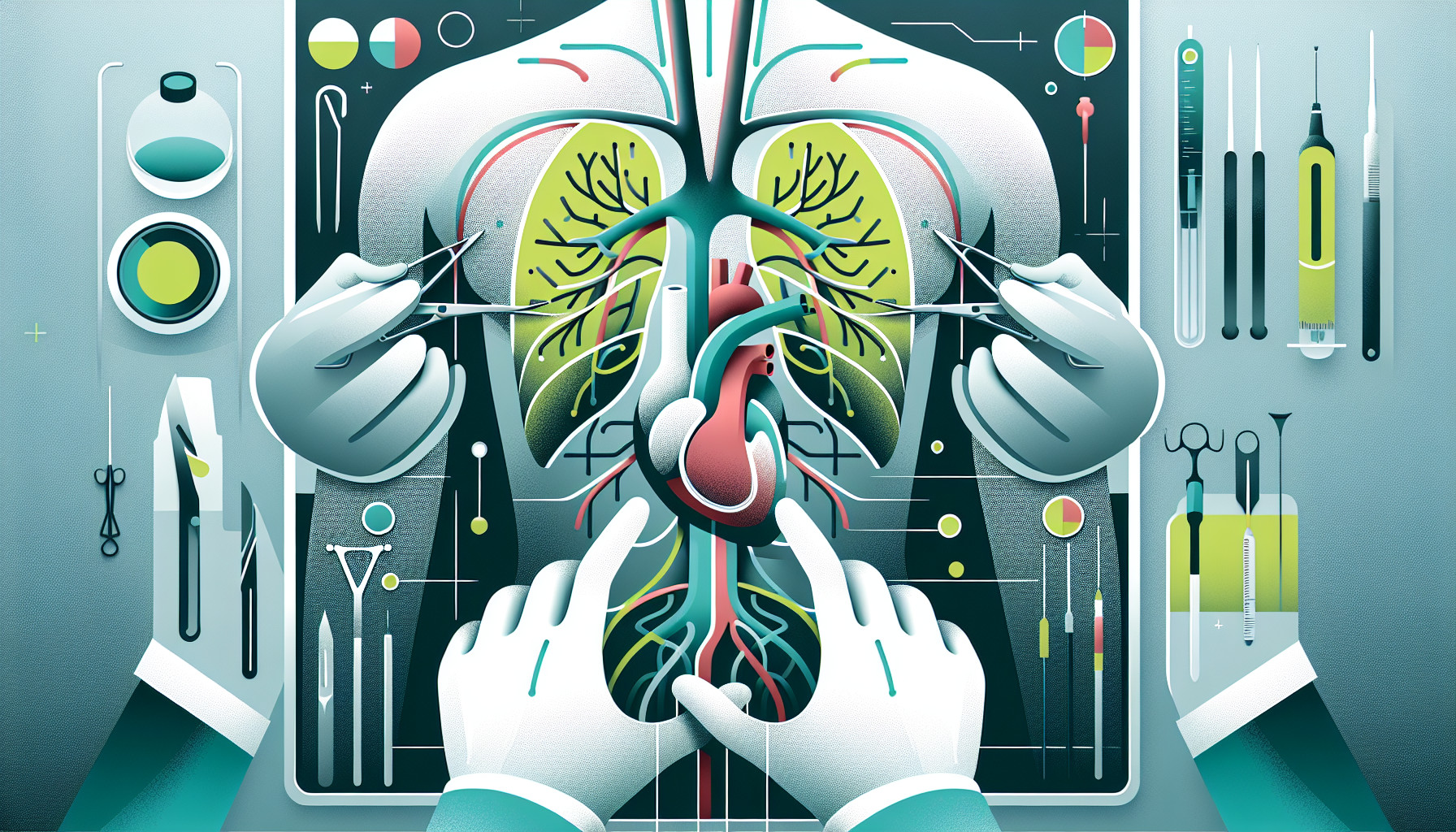Our Summary
This research paper discusses the use of 3D echocardiography in the treatment of patients with heart valve issues and/or aorta problems. The success of reconstructive surgery for these conditions depends on the ability to restore the normal shape and function of the aortic valve and root (the base of the aorta). Currently, 2D echocardiography is predominantly used in clinics to identify and guide the treatment of these abnormalities. However, this paper argues for the use of 3D echocardiography, as it provides a more detailed view of the heart’s structures and can help predict the success of the surgery.
FAQs
- What is the main argument of this research paper in regard to aortic aneurysm repair?
- How can 3D echocardiography enhance the success of reconstructive surgery for heart valve and aorta problems?
- What are the potential benefits of shifting from 2D to 3D echocardiography in treating heart valve issues and/or aorta problems?
Doctor’s Tip
One helpful tip a doctor might tell a patient about aortic aneurysm repair is to follow a healthy lifestyle, including regular exercise, a balanced diet, and avoiding smoking and excessive alcohol consumption. These lifestyle factors can help reduce the risk of complications and improve the success of the surgery. Additionally, it is important for patients to attend follow-up appointments and adhere to their medication regimen as prescribed by their healthcare provider.
Suitable For
Patients who are typically recommended aortic aneurysm repair include those with:
Large or rapidly growing aneurysms: Aneurysms that are larger than 5.5 cm or are growing at a rapid rate are at a higher risk of rupture and may require surgical intervention.
Symptoms: Patients who are experiencing symptoms such as chest or back pain, shortness of breath, or other signs of aortic dissection may need surgery to prevent further complications.
Family history of aortic aneurysms: Patients with a family history of aortic aneurysms or genetic conditions that predispose them to aneurysms may be recommended for surgery to prevent future complications.
High-risk patients: Patients with certain risk factors such as smoking, high blood pressure, or a history of heart disease may be considered high-risk for aortic aneurysm rupture and may benefit from surgical repair.
Patients with connective tissue disorders: Patients with conditions such as Marfan syndrome or Ehlers-Danlos syndrome, which can weaken the walls of the aorta, may be recommended for surgical repair to prevent aneurysm rupture.
Overall, the decision to recommend aortic aneurysm repair is based on the individual patient’s risk factors, symptoms, and overall health, and is typically made by a team of healthcare providers including cardiologists, surgeons, and other specialists.
Timeline
Before aortic aneurysm repair:
- Patient may experience symptoms such as chest or back pain, shortness of breath, or difficulty swallowing.
- Patient undergoes diagnostic tests such as echocardiogram, CT scan, or MRI to confirm the presence of an aortic aneurysm.
- Patient consults with a cardiovascular surgeon to discuss treatment options and risks.
- Patient undergoes preoperative evaluations and preparations for surgery.
After aortic aneurysm repair:
- Patient undergoes aortic aneurysm repair surgery, which may involve open surgery or minimally invasive techniques such as endovascular stent grafting.
- Patient is monitored closely in the intensive care unit post-surgery for any complications or signs of recovery.
- Patient undergoes follow-up imaging tests to assess the success of the repair and monitor for any recurrence of the aneurysm.
- Patient undergoes cardiac rehabilitation to aid in recovery and improve overall heart health.
- Patient continues to have regular check-ups with their healthcare provider to monitor their heart health and prevent future complications.
What to Ask Your Doctor
- What are the risks and benefits of aortic aneurysm repair surgery?
- How will the surgery be performed and what is the expected recovery time?
- Are there any alternative treatments or procedures available for my condition?
- What is the success rate of aortic aneurysm repair surgery?
- What are the potential complications or side effects of the surgery?
- How often will I need follow-up appointments or monitoring after the surgery?
- Will I need to make any lifestyle changes or take medications after the surgery?
- Are there any specific precautions or restrictions I should be aware of post-surgery?
- How long will it take for me to fully recover and resume normal activities?
- Are there any long-term effects or considerations I should be aware of after the surgery?
Reference
Authors: Hagendorff A, Evangelista A, Fehske W, Schäfers HJ. Journal: JACC Cardiovasc Imaging. 2019 Nov;12(11 Pt 1):2225-2244. doi: 10.1016/j.jcmg.2018.06.032. Epub 2019 Mar 13. PMID: 30878428
